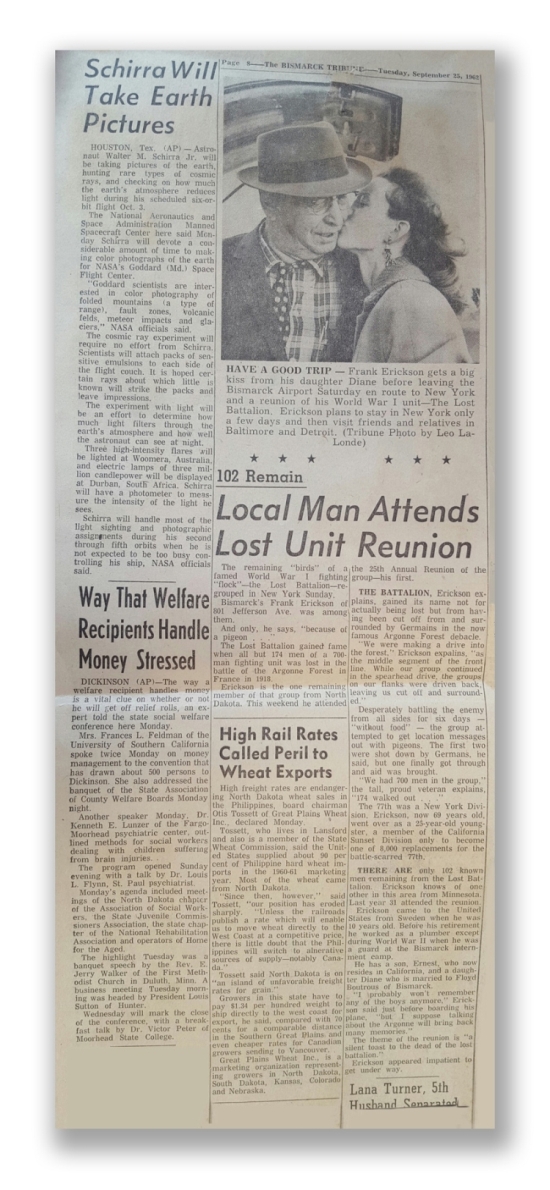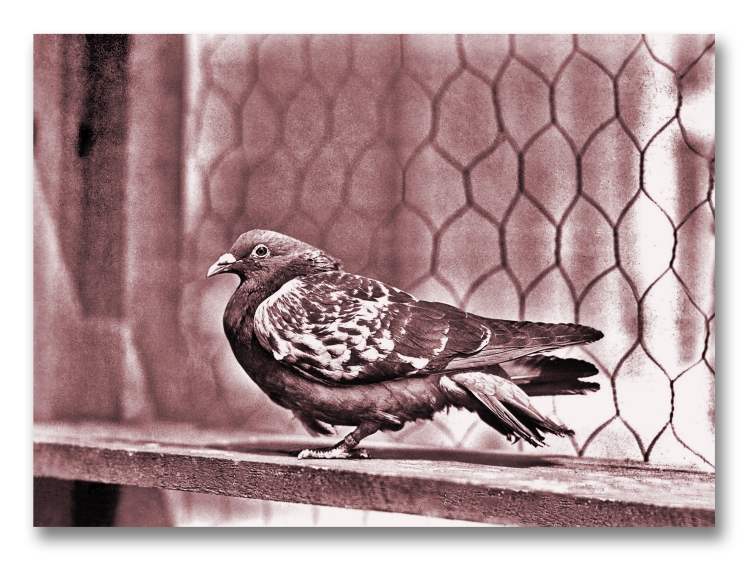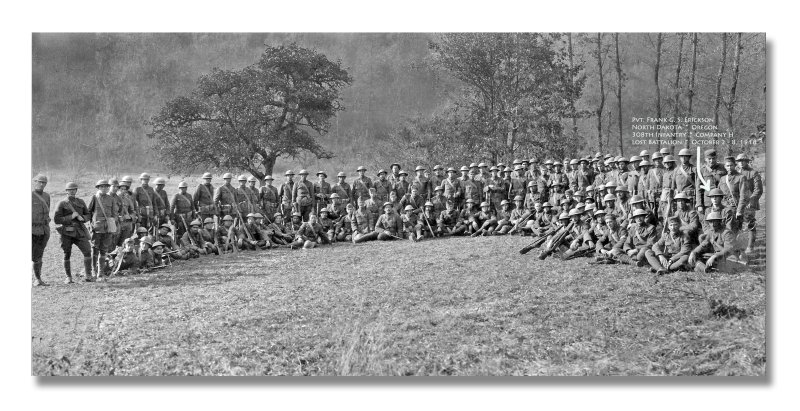
Click to view a High Resolution image

Click to view a High Resolution image

Return to Frank Erickson Page 1 | Return to Frank Erickson Page 2 | Return to Frank Erickson Page 3
h o m e
m a r k e r i c k s o n p a i n t i n g s Frank Severin Erickson Ernest Julius Erickson Andrew Anders Sebran Erickson American Expeditionary Force 1918 - 1919 Out West & North Dakota
|
My grandfather Frank G. S. Erickson was at the Bismarck (ND) Airport on September 24th, 1962, heading to a Lost Battalion Reunion in New York City, something he was looking forward to. His last reunion was in the mid 1950s and this would be a chance to catch up with some of his old buddies. As he smiled his daughter, Dian Marcella (Boutrous) Erickson gives her dad a kiss in the photograph below. Along with Frank's wife Clara Amelia (Nelson) and various family members, all were there to send Frank off in style.
Frank was interviewed at the airport by a reporter for the Bismarck Tribune
and in response to a query concerning how the Lost Battalion survived
their intense ordeal between October 2nd through the 8th of 1918, Frank
responded: Concise and very Frank. Indeed Cher Ami, the Signal Corps pigeon saved the day for the men of the 77th Division surrounded by Germans in the Meuse Argonne in France. Even though the Germans did all they could to stop Cher Ami's flight and despite serious injuries inflicted, he made it to headquarters with the message. On October 3rd, 1918, Major Charles White Whittlesey and more than 554 men were trapped in a small depression, referred to as 'the pocket', behind enemy lines in the Meuse Argonne. They were running out of food, water and ammunition, but maintained their position against countless German assaults and artillery barrages. The men were also receiving friendly fire artillery shelling from allied troops who did not know their location. Surrounded by the Germans, many were killed and wounded in the first day. By the second day, the men who were still alive and not seriously wounded continued to fight back. The ordeal was just starting.
The Major's runners were consistently intercepted or killed by the Germans, so
Whittlesey began dispatching messages by pigeon. The pigeon carrying the first
message was shot down, it read:
A second bird was sent with the message reading: After another pigeon provided incorrect coordinates to headquarters, resulting in a barrage inadvertently targeting the battalion, 'Cher Ami' was dispatched with a note, written on onion paper and placed in a small canister tied to his left leg. That message read: We are along the road parallel to 276.4. Our own artillery is dropping a barrage directly on us. For heavens sake stop it. The Germans saw Cher Ami rising out of the brush and opened fire. After several seconds, he was shot down, but managed to take flight again. He arrived back at his loft at division headquarters 25 miles to the rear in less than a half hour, helping to save the lives of the Lost Battalion. He had been shot through the breast, blinded in one eye, and had a leg hanging only by a tendon. Cher Ami became the hero of the 77th Infantry Division. Army medics worked to save his life. They were unable to save his leg, so they carved a small wooden one for him. When he recovered enough to travel, the now one-legged bird was put on a boat to the United States, with General John J. Pershing seeing him off. Cher Ami was awarded the Croix de Guerre Medal with a palm Oak Leaf Cluster for his heroic service in delivering 12 important messages in Verdun. He died at Fort Monmouth, New Jersey, on June 13, 1919 from the wounds he received in battle and was later inducted into the Racing Pigeon Hall of Fame in 1931. He also received a gold medal from the Organized Bodies of American Racing Pigeon Fanciers in recognition of his service during the war. The man responsible for training and caring for the pigeon in the signal corps, Enoch Clifford Swain, was given an award for his service. Also below is a photograph of the survivors of the early October of 1918 Lost Battalion, taken soon after they escaped from 'the pocket' of the Argonne Forest. |



h o m e